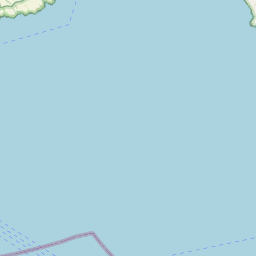Milestones:First Transatlantic Television Signal via Satellite, 1962
- Date Dedicated
- 2002/07/01
- Dedication #
- 44
- Location
- Goonhilly Downs, Cornwall, England
- IEEE Regions
- 8
- IEEE sections
- United Kingdom and Ireland
- Achievement date range
- 1962
First Transatlantic Television Signal via Satellite, 1962
Goonhilly Downs, Cornwall, England - July 2002 - IEEE UKRI Section
On 11 July 1962 this site transmitted the first live television signal across the Atlantic from Europe to the USA, via TELSTAR. This Satellite Earth Station was designed and built by the British Post Office Engineering Department. Known as 'Arthur' (of "Knights of the Round Table" fame), its open-dish design became a model for satellite television earth stations throughout the world.
The plaque can be viewed at the Goonhilly Downs visitors centre in Cornwall, England. NOTE: As of 2015, the plaque has been taken down for protection, and is stored on site, but is not viewable by the public.
In April 1961 a multi-national agreements was signed between the American Telephone and Telegraph Company (AT&T), Bell Telephone Laboratories (Bell Labs), NASA, the British Post Office, and the French National PPT (Post Office.) This agreement established a joint collaboration for the project development of two active, mobile telecommunications satellites, "TELSTAR" and "Relay."
Goonhilly-Downs covers 140 acres and is located at the westernmost end of the Cornwall coast in England. It was selected because of the topography of the land. The first satellite dish to be built on the site, Goonhilly 1, also known as Arthur, was a parabolic design and weighs 1118 tons and was 28 meters in diameter. It set a world standard for the open parabolic design of the dish. The definition of a Parabolic Antenna is an antenna consisting of a parabolic reflector and a source at or near the focus. Microwave dish antenna is an example of a parabolic antenna.
Telstar Facts:
- The satellite was 90 centimeters in diameter
- It had 72 facets
- It weighed 77 kilograms
- The metal framework was made of magnesium, the shell of aluminum, coated with aluminum oxide sprayed on by a plasma jet process.
- Two antennas, transmitting and receiving, surrounded the satellite
- The satellite contained one electron tube, 2,528 semiconductor devices (1064 transistors and 1464 diodes.)
- The power was supplied by 19 rechargeable nickel-cadmium cells. They were charged by the 3600 solar cells on the exterior of the satellite.
- Telstar traveled at a rate of 8 kilometers per second
- It took Telstar 157.797 minutes to orbit the Earth.
This is part of a triple dedication honoring TELSTAR. All ceremonies took place on 11 July 2002. The other two related Milestones are:
First Transatlantic Reception of a Television Signal Via Satellite, 1962
Pleumeur-Bodou, France - July 2002 - IEEE France Section
First Transatlantic Transmission of a Television Signal via Satellite, 1962
Andover, Maine - July 2002 - IEEE Maine Section
Dedication Ceremony
Map












